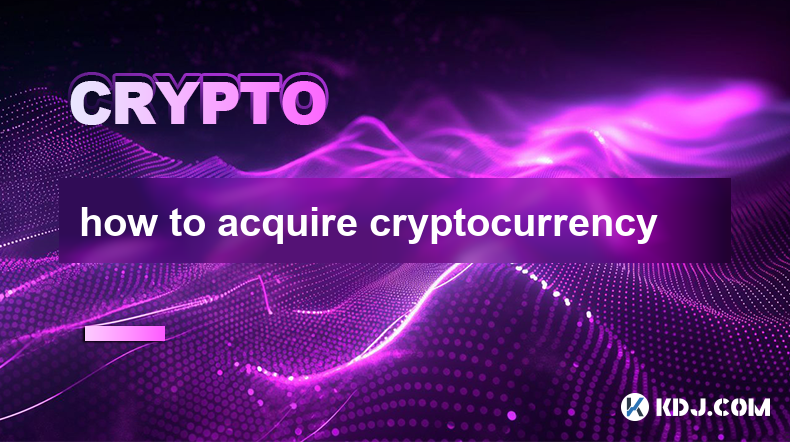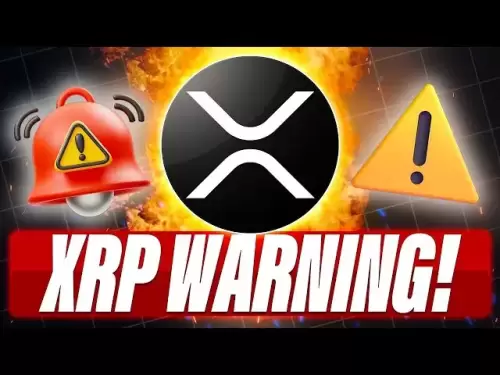-
 Bitcoin
Bitcoin $103,042.3627
-0.78% -
 Ethereum
Ethereum $2,416.4247
-3.48% -
 Tether USDt
Tether USDt $1.0002
0.01% -
 XRP
XRP $2.3208
-2.91% -
 BNB
BNB $641.0580
-0.71% -
 Solana
Solana $161.8902
-5.41% -
 USDC
USDC $0.9998
0.00% -
 Dogecoin
Dogecoin $0.2179
-1.99% -
 Cardano
Cardano $0.7260
-4.12% -
 TRON
TRON $0.2630
-3.56% -
 Sui
Sui $3.6806
-4.16% -
 Chainlink
Chainlink $15.2669
-2.62% -
 Avalanche
Avalanche $21.7139
-5.60% -
 Stellar
Stellar $0.2814
-3.01% -
 Hyperliquid
Hyperliquid $25.4297
-5.03% -
 Shiba Inu
Shiba Inu $0.0...01409
-4.08% -
 UNUS SED LEO
UNUS SED LEO $8.6199
-0.92% -
 Hedera
Hedera $0.1878
-3.27% -
 Bitcoin Cash
Bitcoin Cash $384.3434
-3.64% -
 Toncoin
Toncoin $2.9960
-3.33% -
 Litecoin
Litecoin $95.8268
-2.58% -
 Polkadot
Polkadot $4.5126
-4.92% -
 Monero
Monero $345.6183
1.52% -
 Bitget Token
Bitget Token $5.1630
-1.55% -
 Pepe
Pepe $0.0...01276
-3.79% -
 Dai
Dai $0.9998
0.00% -
 Pi
Pi $0.7204
-2.72% -
 Ethena USDe
Ethena USDe $1.0005
0.00% -
 Uniswap
Uniswap $5.7486
-2.80% -
 Bittensor
Bittensor $393.9451
-6.57%
how to acquire cryptocurrency
When choosing a crypto exchange, prioritize security measures, regulatory compliance, and ease of use to ensure a secure and accessible trading experience.
Jan 30, 2025 at 10:24 am

How to Acquire Cryptocurrency
Step 1: Choose a Crypto Exchange
- Compare fees, security measures, supported currencies, and user interface.
- Consider reputable exchanges like Coinbase, Binance, Kraken, and KuCoin.
- Verify the exchange's regulatory compliance and track record for security and transparency.
Step 2: Create an Account
- Provide personal information, including name, email, and address.
- Complete identity verification (KYC) by submitting government-issued ID and a selfie.
- Set up two-factor authentication (2FA) for enhanced security.
Step 3: Fund Your Account
- Bank Transfer: Link your bank account to the exchange and transfer funds.
- Credit/Debit Card: Purchase cryptocurrency directly with your card (may incur higher fees).
- Third-Party Wallet: Transfer funds from an existing cryptocurrency wallet.
- Peer-to-Peer (P2P): Buy or sell cryptocurrency directly from other users on the exchange's marketplace.
Step 4: Select Your Currency
- Choose from a wide range of cryptocurrencies supported by the exchange.
- Research different coins and their use cases to make informed decisions.
- Consider factors such as market capitalization, trading volume, and potential growth.
Step 5: Place an Order
- Market Order: Execute an immediate trade at the current market price.
- Limit Order: Set a specific price limit for your trade to be executed when the market reaches that price.
- Stop Order: Place a trigger order to sell your cryptocurrency if it falls below a certain level to minimize losses.
Step 6: Store Your Cryptocurrency
- Hardware Wallet: Store your cryptocurrency offline in a dedicated device for maximum security.
- Software Wallet: Use mobile or desktop apps to conveniently store your coins on any device.
- Exchange Wallets: Leave your cryptocurrency on the exchange's platform for easy trading, but prioritize security by using 2FA and storing only small amounts for immediate trading.
- Paper Wallet: Generate a physical paper record of your private keys for secure offline storage.
Step 7: Monitor Your Investments
- Price Tracking: Use cryptocurrency price trackers to stay informed about market fluctuations.
- Market News: Keep up with industry news and expert insights to make informed investment decisions.
- Trading Analysis: Analyze charts, indicators, and market sentiment to identify potential trading opportunities.
Step 8: Protect Yourself from Scams
- Verify Website Authenticity: Check the URL and look for security certificates before accessing the exchange's website.
- Beware of Phishing Emails: Do not click on links or provide sensitive information in emails claiming to be from exchanges.
- Use Strong Passwords: Create complex passwords for your exchange accounts and enable 2FA.
- Report Suspicious Activity: If you encounter suspicious emails, websites, or individuals, report them to the exchange immediately.
FAQs
Q: What is the cheapest way to buy cryptocurrency?
A: Direct bank transfers typically have the lowest fees, while credit/debit card purchases carry higher charges.
Q: Is it legal to buy cryptocurrency?
A: The legality of cryptocurrency varies by jurisdiction. Check local regulations before trading.
Q: Can I store my cryptocurrency on my computer?
A: Yes, but it is crucial to use a reputable software wallet and maintain robust antivirus protection.
Q: Where can I learn more about cryptocurrency?
A: Websites like CoinMarketCap, Binance Academy, and Kraken Learn offer comprehensive resources on cryptocurrency concepts and trading strategies.
Disclaimer:info@kdj.com
The information provided is not trading advice. kdj.com does not assume any responsibility for any investments made based on the information provided in this article. Cryptocurrencies are highly volatile and it is highly recommended that you invest with caution after thorough research!
If you believe that the content used on this website infringes your copyright, please contact us immediately (info@kdj.com) and we will delete it promptly.
- Trump risks undercutting his presidency with a Hunter Biden-style crypto influence-peddling scandal
- 2025-05-19 18:30:14
- Onyxcoin (XCN) Price Ready to Rip? Unusual Buying Pressure Hints at a Game-Changing Rally
- 2025-05-19 18:30:14
- Punisher Coin ($PUN) Officially Launches Stage 1 of Its Presale Today
- 2025-05-19 18:25:13
- Dubai's Crypto Regulator Gives VASPs Until June 19 to Comply with Updated Rulebooks
- 2025-05-19 18:25:13
- Bitcoin breaks records as Layer 2 solutions gain momentum
- 2025-05-19 18:20:15
- Litecoin: Is 'Digital Silver' Still a Good Bet in Today's Crypto World?
- 2025-05-19 18:20:15
Related knowledge

What is Ethereum’s Slashing mechanism and how to punish malicious behavior?
Feb 20,2025 at 03:08am
Key PointsOverview of slashingDifferent types of slashing in EthereumIncentives and consequences of slashingIdentifying and reporting slashed validatorsOngoing discussions and potential improvementsEthereum's Slashing Mechanism: Punishing Malicious BehaviorEthereum's slashing mechanism is an essential tool for ensuring network security and punishing mal...

What is the verifier node of Ethereum and how to become a verifier?
Feb 19,2025 at 06:00pm
The Verifier Node of Ethereum: A Comprehensive GuideKey Points:What is a Verifier Node?How to Become a Verifier NodeResponsibilities and Rewards of a Verifier NodeMinimum Requirements for Becoming a Verifier NodePotential Difficulties in Running a Verifier Node1. What is a Verifier Node?A Verifier Node is an independent entity on the Ethereum network th...

What is Ethereum’s staking, and how to participate and earn money?
Feb 19,2025 at 04:37pm
Key Points:Understanding Ethereum's Staking MechanismSteps to Participate in StakingBenefits and Rewards of StakingSecurity and Risk ConsiderationsTechnical Requirements and Hardware OptionsPotential Challenges and Troubleshooting TipsFAQs on Ethereum StakingWhat is Ethereum's Staking?Proof-of-Stake (PoS) is a consensus mechanism used in blockchain netw...

What is Ethereum’s DAO (Decentralized Autonomous Organization) and how does it work?
Feb 20,2025 at 03:12am
Key PointsDefinition and Structure of a DAOGovernance and Decision-Making in DAOsBenefits and Use Cases of DAOsChallenges and Limitations of DAOsWhat is Ethereum's DAO (Decentralized Autonomous Organization) and How Does It Work?Definition and Structure of a DAOA Decentralized Autonomous Organization (DAO) is an innovative governance and management fram...

What is Ethereum's multi-signature wallet and how to improve security?
Feb 20,2025 at 02:18pm
Key Points:Understanding the Concept of a Multi-Signature WalletBenefits and Drawbacks of Multisig WalletsRequirements for Setting Up a Multisig WalletStep-by-Step Guide to Generating a Multisig WalletImplementing Strategies for Enhanced Security1. Understanding the Concept of a Multi-Signature WalletA multi-signature (multisig) wallet in the Ethereum e...

What is Ethereum's oracle and how to provide data for smart contracts?
Feb 21,2025 at 01:30am
Key Points:Understanding the concept of oracles in EthereumExploring different types of oraclesDetailed guide on how to provide data for smart contractsAddressing potential challenges and considerationsWhat is Ethereum's Oracle?Oracles are crucial components in the Ethereum ecosystem, enabling smart contracts to access real-world data and off-chain even...

What is Ethereum’s Slashing mechanism and how to punish malicious behavior?
Feb 20,2025 at 03:08am
Key PointsOverview of slashingDifferent types of slashing in EthereumIncentives and consequences of slashingIdentifying and reporting slashed validatorsOngoing discussions and potential improvementsEthereum's Slashing Mechanism: Punishing Malicious BehaviorEthereum's slashing mechanism is an essential tool for ensuring network security and punishing mal...

What is the verifier node of Ethereum and how to become a verifier?
Feb 19,2025 at 06:00pm
The Verifier Node of Ethereum: A Comprehensive GuideKey Points:What is a Verifier Node?How to Become a Verifier NodeResponsibilities and Rewards of a Verifier NodeMinimum Requirements for Becoming a Verifier NodePotential Difficulties in Running a Verifier Node1. What is a Verifier Node?A Verifier Node is an independent entity on the Ethereum network th...

What is Ethereum’s staking, and how to participate and earn money?
Feb 19,2025 at 04:37pm
Key Points:Understanding Ethereum's Staking MechanismSteps to Participate in StakingBenefits and Rewards of StakingSecurity and Risk ConsiderationsTechnical Requirements and Hardware OptionsPotential Challenges and Troubleshooting TipsFAQs on Ethereum StakingWhat is Ethereum's Staking?Proof-of-Stake (PoS) is a consensus mechanism used in blockchain netw...

What is Ethereum’s DAO (Decentralized Autonomous Organization) and how does it work?
Feb 20,2025 at 03:12am
Key PointsDefinition and Structure of a DAOGovernance and Decision-Making in DAOsBenefits and Use Cases of DAOsChallenges and Limitations of DAOsWhat is Ethereum's DAO (Decentralized Autonomous Organization) and How Does It Work?Definition and Structure of a DAOA Decentralized Autonomous Organization (DAO) is an innovative governance and management fram...

What is Ethereum's multi-signature wallet and how to improve security?
Feb 20,2025 at 02:18pm
Key Points:Understanding the Concept of a Multi-Signature WalletBenefits and Drawbacks of Multisig WalletsRequirements for Setting Up a Multisig WalletStep-by-Step Guide to Generating a Multisig WalletImplementing Strategies for Enhanced Security1. Understanding the Concept of a Multi-Signature WalletA multi-signature (multisig) wallet in the Ethereum e...

What is Ethereum's oracle and how to provide data for smart contracts?
Feb 21,2025 at 01:30am
Key Points:Understanding the concept of oracles in EthereumExploring different types of oraclesDetailed guide on how to provide data for smart contractsAddressing potential challenges and considerationsWhat is Ethereum's Oracle?Oracles are crucial components in the Ethereum ecosystem, enabling smart contracts to access real-world data and off-chain even...
See all articles
























































































